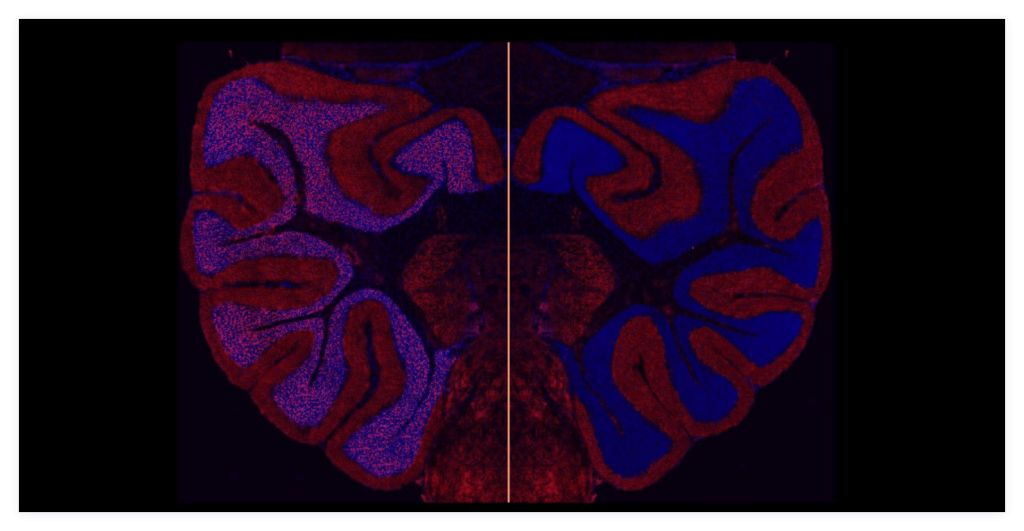
The molecular mechanism of synapse formation and related brain disorders, including autism and neurodegenerative diseases.

Synapse is where one neuron connects with another neuron. It’s the center of neuronal communication and information processing in the brain. Synapses are highly specialized structures and it’s formation is tightly controlled by different molecules. Here is an image of cultured hippocampal neuron with synapses marked in orange.

LHFPL4, a small transmembrane protein interacts with both neuroligin-2 and GABA receptor, controls the inhibitory synapse formation at the granular layer of cerebellum. An image of mouse brains showing that inhibitory synapses were present in the cerebellum granular layer of wild type mice (Left), but disappeared from LHFPL4 KO mice (Right).

A diagram showing that when LHFPL4 protein was missing, it disrupts inhibitory synapse formation at the cerebellar granular layer and led to impaired motor behaviors in mice.